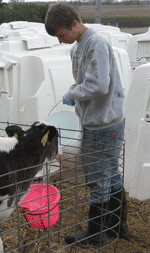 The cost of raising children increased again last year. That is no surprise with the cost of food and gasoline rising for everyone.
The cost of raising children increased again last year. That is no surprise with the cost of food and gasoline rising for everyone. According to Expenditures on Children by Families, a child born in 2011 to a middle-income home, will cost $234,900 to raise through the age of seventeen. ($80,000 per year is deemed "middle" income). This figure takes into account housing, food, transportation, clothing, health care, child care and miscellaneous expenses. Lower income families will spend $169,080 and higher-income earners can expect to shovel out $389,670 over seventeen years per child. Since 2000, there has been a $60,000 increase per child.

Housing is the greatest expense, and has been for the 50 years that USDA has been reporting the information. The only good news, is that more children lower the cost per child as they can share bedrooms, wear handed-down clothing and less expensive food can be purchased in bulk. A calculator for cost of raising children is available with variables for salary, children and single-parent homes. Visit the USDA website to enter your information and calculate your estimated costs.
The most expensive locations are the urban Northeast, urban West and urban Midwest. Rural areas have the lowest child-rearing expenses. Farmers are well-versed in budgets and cost-analysis, so I suspect that the cost to raise a farm kid would be less than one raised in town. The study did not break down costs by occupation, just urban and rural. Besides, there can be a lot more distraction available (shopping malls, movie theatres, sporting events) closer to metropolitan areas, which is sure to factor into some impulse buying.
So, if a typical family has two children, they are looking at a half-million dollars to bring them into adulthood. This figure does not include any college education. In a recent survey showing costs of college, a "moderate" college budget for an in-state, public college for the last academic year averaged $21,447. A moderate budget at a private college averaged $42,224. Information provided by COLLEGEdata.
The cost of raising a family really cannot be put strictly into dollars and cents on a balance sheet. At moments, when budgets are tight, you might think about the half million dollars that could have been used in the business. But quickly turn to the faces of your children and you would do it all over again.
Most young people on farms grew up having chores, some were paid and others were not. So, while children may appear to be an expense, they certainly can be an asset as well. Maybe a study should be done to see the value of farm work completed by a young person until the age of seventeen. Their basic hours of labor, their knowledge to train others and their overall intellectual contributions all add value to the operation. The goal of many parents is to have their children return to the operation – and that is "priceless".
Everything has a price, but only the truly special are valued.








